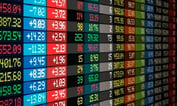If U.S. interest rates rise moderately this year, as many strategists expect, bond prices will fall. Investors would still collect income from yield of their bond or bond funds, but at some point the rise in rates could cause a capital loss greater than the income they receive.
Knowing that breakeven point is crucial for investors and advisors when choosing individual bonds or bond funds, especially in the current market, where low yields have increased the interest rate sensitivity of bonds.
“One of the larger risks is interest rates, not default rates,” says Jeffrey Sherman, deputy chief investment officer of DoubleLine, about bond market risk. “People may forget if rates go up, prices go down.”
Sherman is the creator of the Sherman Ratio, which helps identify that breakeven point. The ratio compares a bond or bond fund’s yield (the numerator) to its duration, which is a measure of interest rate sensitivity. If interest rates increase more than than the Sherman yield, the bond or bond fund will have a capital loss. And If that loss is greater than the bond or bond fund’s yield, the investor will lose money.
Take the 10-year U.S. Treasury note, for example. Its yield is 1.8% and its duration slightly north of 8. Its Sherman ratio, using a duration of 8 for simplicity purposes, is 0.225%, which means that a 0.225% increase in yield will result in no capital gains and an increase above that figure results in a capital loss.









 January 17, 2020 at 03:42 PM
January 17, 2020 at 03:42 PM









